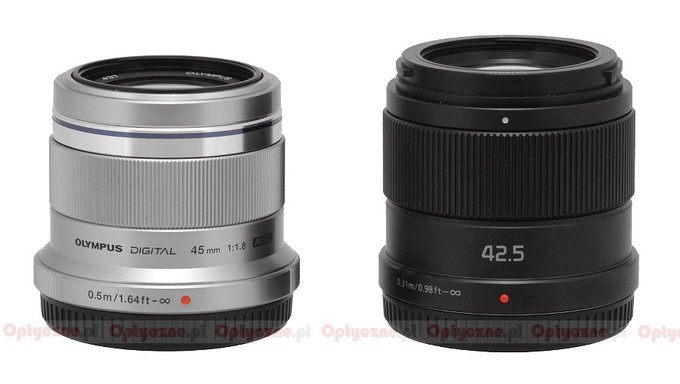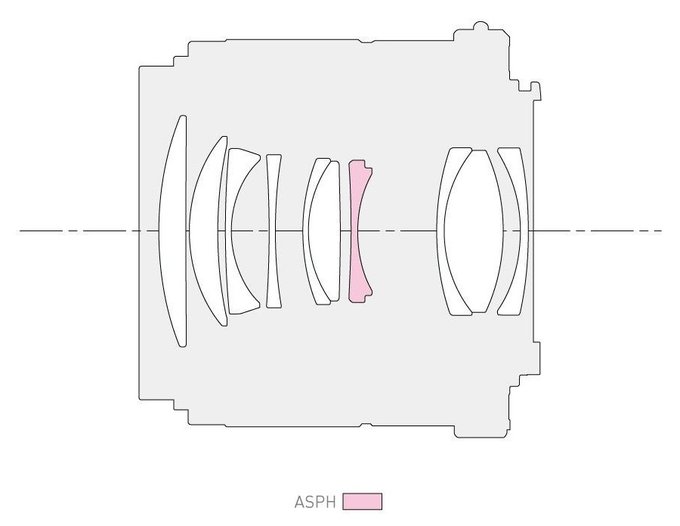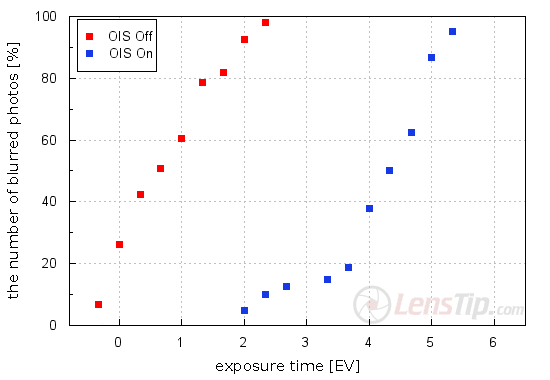Panasonic G 42.5 mm f/1.7 ASPH. POWER O.I.S.
3. Build quality and image stabilization
In the photo below the Panasonic is positioned next to the Olympus 1.8/45.
 |
Please Support UsIf you enjoy our reviews and articles, and you want us to continue our work please, support our website by donating through PayPal. The funds are going to be used for paying our editorial team, renting servers, and equipping our testing studio; only that way we will be able to continue providing you interesting content for free. |
- - - - - - - - - - - - - - - - - - - - - - - - - - - - - - - - - - - - - - - - - - - - - - - -
The Panasonic G 42.5 mm f/1.7 ASPH. POWER O.I.S. starts with a metal mount surrounding the contacts and a rear element, 19 mm in diameter, which doesn’t rotate.
 |
The proper body of the lens begins with an immobile, metal ring featuring a red dot which makes the alignment with a camera easier and the focusing range of the lens ( from 0.31m/0.98ft to infinity). The ring’s diameter decreases and then you can see other inscriptions, with the name and the parameters of the lens and the information that it is produced in Japan. Here the Panasonic differs from the Olympus as that one is made in China.
 |
Then you see a manual focus ring, 19 mm wide and completely covered by rubber ribbing. There is no distance scale on it or a depth of field scale for that matter. The ring works with electronic relay and running through the whole distance scale needs a turn through an angle of about 180 degrees if you go fast. If you turn the ring slowly it might even amount to 360 degrees.
Behind the manual focus ring you see a part of the casing which turns seamlessly into a hood mount. The front element of the lens is 31 mm in diameter and you can find an inscription with the name and basic parameters of the lens around it, along with a non-rotating filter thread, 37 mm in diameter.
 |
The optical construction consists of 10 elements positioned in 8 groups. One element is aspherical. Inside you can also find an aperture with seven diaphragm blades which might be closed down to maximum f/22.
Buyers get both caps and a hood along with the lens in the box.
 |
Optical stabilization
In order to check the stabilization efficiency we took several dozen photos at every exposure time ranging from 1/100 to 1/2 of a second with the stabilization switched on and off; then the percentage of blurred photos was presented as a time exposure function, expressed in EV (and 0 EV is the equivalent of 1/80 of a second).

As you see the maximum distance between both curves reaches 3.7-3.8 EV and so we assess the efficiency of the image stabilizing unit the Panasonic 1.7/42.5 is equipped with. It is a very good result, only slightly lower than 4 EV declared, by the producer.






